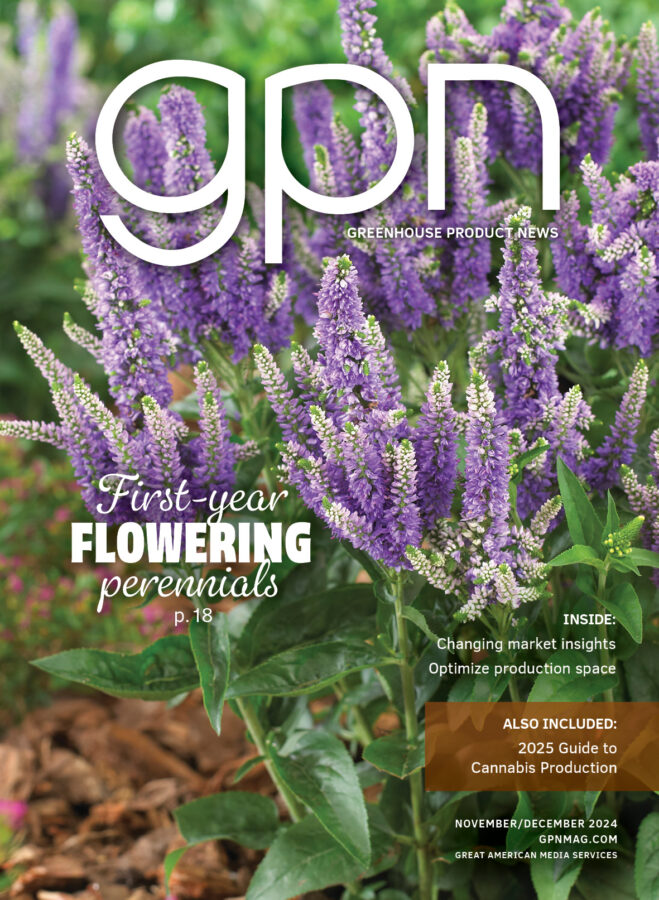
UNM researchers help build first cannabis flower categorization system
University of New Mexico researchers joined software developers from Releaf App to solve a fundamental hurdle in the medical cannabis sciences: how to identify and clinically investigate cannabis plants and their unique chemical profiles, irrespective of strain names and other arbitrary features dominating the extant cannabis industry.
Using Releaf App data on cannabis phytochemical profiles and patient outcomes, cannabis researchers at The University of New Mexico constructed the first Cannabis flower indexing system capable of distinguishing individual plant strains based on their primary cannabinoid and terpene contents, or what is scientifically referred to as “cannabis chemovars.”
In their recent study, titled “Systematic Combinations of Major Cannabinoid and Terpene Contents in Cannabis Flower and Patient Outcomes: A Proof-of-Concept Assessment of the Vigil Index of Cannabis Chemovars,” (VICC), published in the Journal of Cannabis Research, the UNM researchers, including associate professor of Psychology Jacob Vigil and associate professor of Economics Sarah Stith, used data from the Releaf App to design a complete cannabis product indexing system and demonstrated that unique chemovars differ in their therapeutic effects, a long-held observation by cannabis users, but largely untested by the scientific community.
Research on the effects of using cannabis has historically been constrained by the plant’s natural heterogeneity, i.e., its tendency to develop unique chemical profiles due to genetics and heavily influenced by nearly every aspect of standard cultivation, harvesting, and processing methods. This inability to fully standardize the cannabis plant has significantly limited the generalizability of cannabis-based research findings and the reliable application of cannabis–based treatments.
“While the cannabis plant’s natural ability to develop different types of chemical profiles may complicate standardization of cannabis medications, as is typical of conventional pharmaceuticals, its inherent phytochemical heterogeneity may also explain why the Cannabis plant is effective at treating so many different types of health conditions,” said Vigil, the lead researcher. “I hope that by creating this comprehensive, common-sense, and user-friendly indexing system, scientists, health providers, and most importantly, patients will be better able to identify and distinguish cannabis plant strains and their unique and desired effects, which is the ultimate goal of most cannabis-based research.”
Stith, a co-author on the paper added, “it is important that the inherent heterogeneity in cannabis be measured and leveraged to generate improved and expanded therapeutic benefits rather than lost in an effort to transform cannabis into a conventional medication, e.g., through the FDA’s required standardization of investigational new drugs (IND), which was developed not for an inherently diverse plant species but rather for the mass-produced synthetic chemical compounds that constitute the majority of conventional medications.”
The study analyzed more than 6,000 cannabis usage sessions to identify 478 distinct cannabis plant chemovars and demonstrated that the most frequently consumed plant strains demonstrate clinically distinct effects and side effect experiences. The data was collected with the Releaf App, a cannabis education software application designed to monitor how different types of cannabis products are experienced in real-time and allow for comparison of effectiveness and side effect reporting across products, symptom types, combustion methods, and cannabis administration sessions.
The novel indexing system identified distinct cannabis chemovars using 4-character codes based on phytochemical potencies, including THC, CBD, and the primary and secondary terpenes detected. Although heterogeneity in effectiveness across chemovars existed depending on the underlying symptom, results generally indicated improved effectiveness for treating pain, depression, or anxiety from chemovars with above-average levels of myrcene and terpinolene and non-detectible levels of CBD.
Prior to the invention of the Vigil Index of Cannabis Chemovars, or “VICC,” cannabis plants and plant-based products were largely characterized by arbitrary and unreliable strain names, often invented by producers and retailers or approximated by secondary online references such as “Leafly.” Within the cannabis industry, it is not uncommon for strains to be renamed, for example, if product sales are not desirable, leaving the average user with little ability to either seek or avoid particular strains that are commercially available.
“Due to the modernization and hybridization of the cannabis plant, strain names are largely irrelevant and nothing more than a marketing strategy used by brands and retailers to try and sell products,” said Tyler Dautrich, COO of MoreBetter (Releaf App). “This publication provides a proof-of-concept of a more accurate and legitimate way to classify cannabis flower and better inform consumers.”



